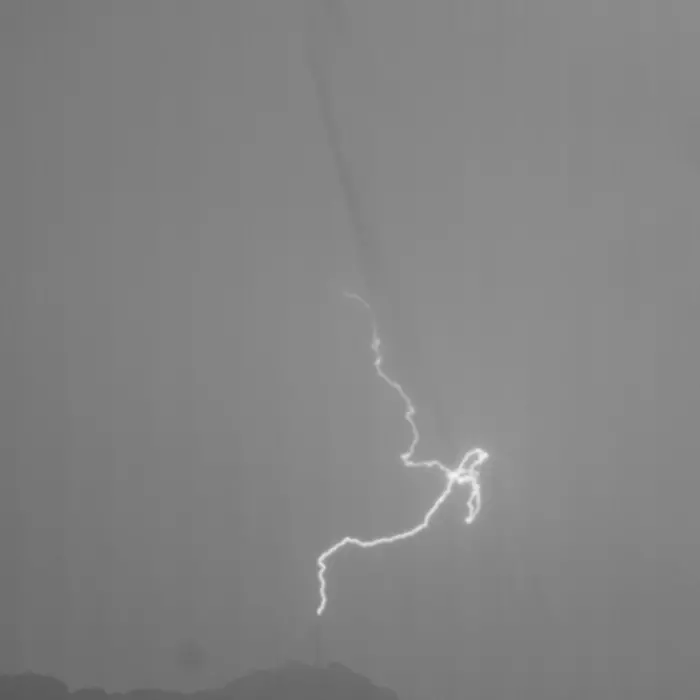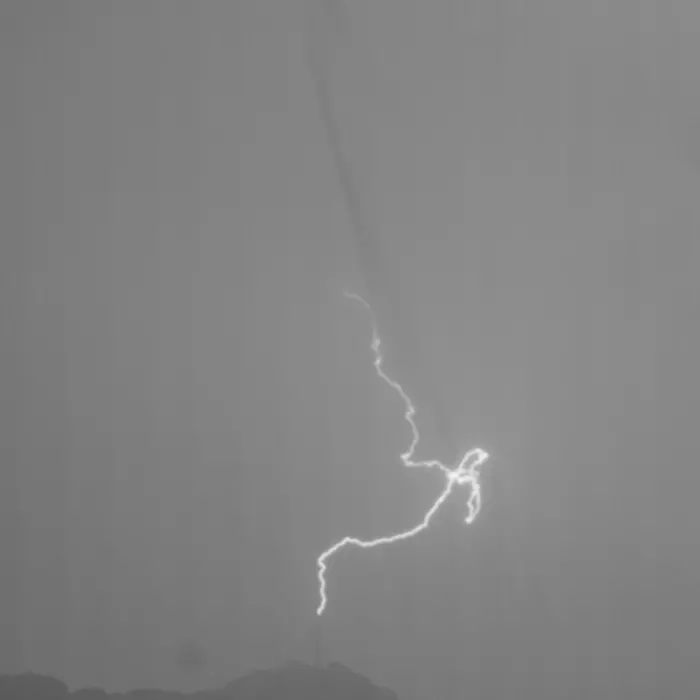Globally, lightning is responsible for over 4,000 fatalities and billions of dollars in damage every year; Switzerland itself weathers up to 150,000 strikes annually. Understanding exactly how lightning forms is key for reducing risk, but because lightning phenomena occur on sub-millisecond timescales, direct measurements are extremely difficult to obtain.

Credit: © EMC EPFL CC BY SA
Globally, lightning is responsible for over 4,000 fatalities and billions of dollars in damage every year; Switzerland itself weathers up to 150,000 strikes annually. Understanding exactly how lightning forms is key for reducing risk, but because lightning phenomena occur on sub-millisecond timescales, direct measurements are extremely difficult to obtain.
Now, researchers from the Electromagnetic Compatibility Lab, led by Farhad Rachidi, in EPFL’s School of Engineering have for the first time directly measured an elusive phenomenon that explains a lot about the birth of a lightning bolt: X-ray radiation. In a collaborative study with the University of Applied Sciences of Western Switzerland and Uppsala University in Sweden, they recorded lightning strikes at the Säntis tower in northeastern Switzerland, identifying X-rays associated with the beginning of upward positive flashes. These flashes start with negatively charged tendrils (leaders) that ascend stepwise from a high-altitude object, before connecting with a thundercloud, transferring positive charge to the ground.
“At sea level, upward flashes are rare, but could become the dominant type at high altitudes. They also have the potential to be more damaging, because in an upward flash, lightning remains in contact with a structure for longer than it does during a downward flash, giving it more time to transfer electrical charge,” explains Electromagnetic Compatibility Lab PhD candidate Toma Oregel-Chaumont.
Although X-ray emissions have previously been observed from other types of lightning, this is the first time they have been captured from upward positive flashes. Oregel-Chaumont, the first author on a recent Nature Scientific Reports paper describing the observations, says that they offer valuable insights into how lightning – and upward lightning in particular – forms.
“The actual mechanism by which lightning initiates and propagates is still a mystery. The observation of upward lightning from tall structures like the Säntis tower makes it possible to correlate X-ray measurements with other simultaneously measured quantities, like high-speed video observations and electric currents.”
A unique observation opportunity
It’s perhaps not surprising that the novel observations were made in Switzerland, as the Säntis tower offers unique and ideal measurement conditions. The 124-meter tower is perched atop a high peak of the Appenzell Alps, making it a prime lightning target. There is a clear line of sight from neighboring peaks, and the expansive research facility is packed with
high-speed cameras, X-ray detectors, electric field sensors, and current-measuring devices.
Crucially, the speed and sensitivity of this equipment allowed the team to see a difference between negative leader steps that emitted X-rays and those that did not, supporting a theory of lightning formation known as the cold runaway electron model. In a nutshell, the association of X-rays with very rapid electric field changes supported the theory that sudden increases in the air’s electric field causes ambient electrons to “run away” and become a plasma: lightning.
“As a physicist, I like to be able to understand the theory behind observations, but this information is also important for understanding lightning from an engineering perspective: More and more high-altitude structures, like wind turbines and aircraft, are being built from composite materials. These are less conductive than metals like aluminum, so they heat up more, making them vulnerable to damage from upward lightning,” Oregel-Chaumont says.
The observations at Säntis – which receives over 100 lightning strikes every year – are ongoing. Next, the scientists plan to add a microwave sensor to the tower’s arsenal of equipment; this could help determine whether the cold runaway model also applies to downward lightning, as unlike X-rays, microwaves can be measured from the clouds.
Journal
Scientific Reports
DOI
10.1038/s41598-024-58520-x
Method of Research
Observational study
Subject of Research
Not applicable
Article Title
Direct observations of X-rays produced by upward positive lightning
Article Publication Date
6-Apr-2024





